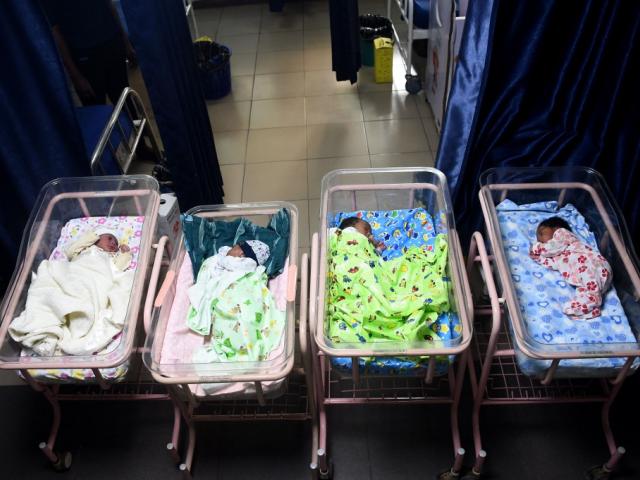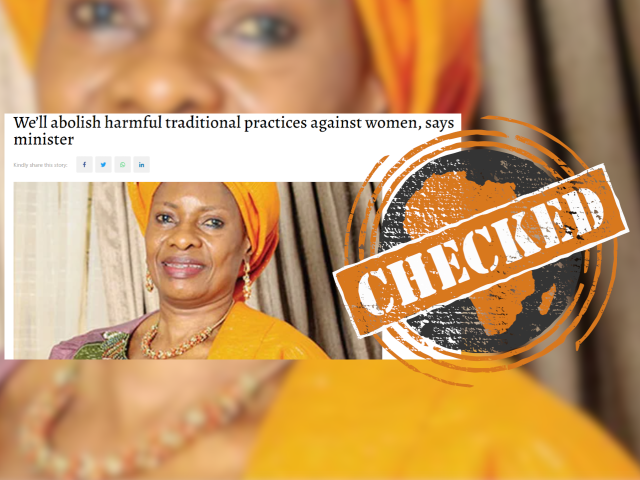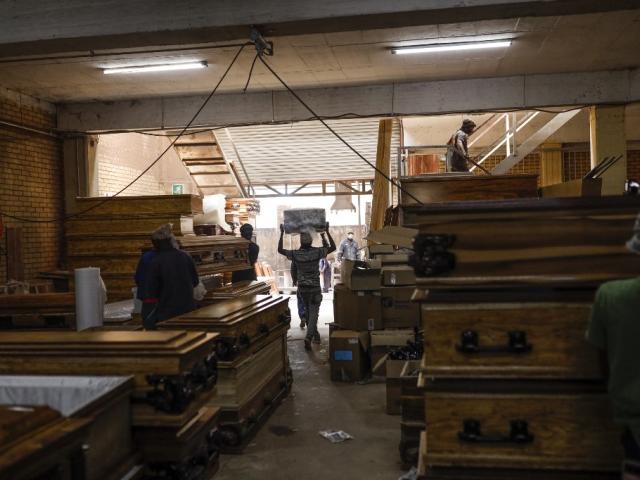The community of Hammanskraal, a township north of South Africa’s capital Pretoria, was rocked by a cholera outbreak in May 2023.
The area has not had clean water or proper sanitation for almost two decades.
In the latest available data, Hammanskraal’s population stood at just over 21,000, with almost 83% of residents receiving their water from the local or regional water scheme.
As of 27 May 2023, 23 cholera-related deaths had been recorded in the township.
Laboratory confirmed and suspected cases were first recorded in the country early in the year, but the Gauteng province’s health department only confirmed an outbreak in Hammanskraal on 21 May.
Other cases have been identified in South Africa’s Free State and Limpopo provinces.
In a media briefing on 31 May, health minister Dr Joe Phaahla said Hammanskraal was the epicentre of the outbreak in South Africa.
However, he noted “a significant downward trend” in infections in the area since the start of the outbreak.
The local chapter of the United Nations Children’s Fund (Unicef South Africa) has warned of a catastrophe if no urgent action is taken to contain the cholera outbreak.
“This is a disease that nobody should die from,” it said in a press release.
What is cholera?
According to the South African National Institute for Communicable Diseases (NICD), cholera is “an infectious disease that causes severe watery diarrhoea, which can lead to dehydration and even death if untreated”.
The NICD is the country's main public health organisation. It provides science-based information about communicable diseases, focusing on research, outbreak response and surveillance. Communicable diseases can be passed from one person to another, directly or indirectly.
You can contract cholera by consuming food or water contaminated with the Vibrio cholerae bacterium, “found in water that has been contaminated by faeces from a person infected with the bacteria”.
According to the World Health Organization (WHO), cholera was first detected in the 19th century in India and spread across the world. Since then, it has killed millions of people in a series of pandemics.
A disease is considered a pandemic once it affects a large portion of the world’s population.
Researchers estimate that cholera kills up to 143,000 people each year across the world.
Who is at risk from cholera?
Cholera is prevalent in parts of Africa and Asia. In Africa most of the countries facing outbreaks have experienced natural disasters, such as flooding and drought. Other causes include poor access to water, conflict, lack of access to healthcare and the expansion of informal settlements, according to the WHO.
In southern Asia, “post-monsoon season (and post-floods) is usually associated with a cholera peak”. Monsoon is a season that brings heavy rains.
Eleven countries in eastern and southern Africa were facing “one of the worst cholera outbreaks to hit the region in years”, according to the WHO in March 2023.
As of April 2023, 24 countries around the world had reported cholera cases, with deadly outbreaks in Ethiopia and Nigeria.
According to Unicef, children under the age of five with “severe wasting” are particularly vulnerable to cholera. Wasting occurs when children are without proper nutrition and are too thin for their height.
Unicef says: “Diarrhoeal diseases such as cholera are over 10 times more lethal among severely wasted children.”
What are the symptoms?
In most cases, cholera patients experience mild to no symptoms at all, according to the NICD.
Usually, it takes a few hours to a few days for a person to become ill after ingesting contaminated water or food.
A mild case of cholera “presents as a diarrhoeal illness which can’t easily be distinguished from other common causes of diarrhoea”.
“About 20-25% of those who get diarrhoea, it’s very severe and they often have vomiting. The disease progresses rapidly, they can be fine in the morning and very ill by the end of the day,” according to the WHO.
In severe instances, the NICD says, symptoms include profuse, painless and watery diarrhoea; vomiting; and dehydration. Children may develop fever.
Some people may also experience cramps and nausea.
How is cholera treated?
South African health officials have urged the public to seek medical treatment as soon as they experience at least one of the symptoms, to prevent death.
Water experts at the University of the Witwatersrand (Wits) in Johannesburg have compiled a list of preventative measures and a guideline on how to purify water. These include treating water with unscented bleach, such as Jik.
To purify water, you should let it boil for about two minutes and keep it covered once boiled to avoid recontamination.
If water to be purified with bleach is cloudy, first “pass it through a filter paper like a coffee filter paper or using a mutton cloth (cleaning cloth) folded over 8 times”.
Then add two drops of bleach for every litre of water or add one teaspoon to 25 litres of water.
The US Centers for Disease Control and Prevention lists three treatment methods for cholera:
- Rehydration therapy, which is the primary treatment and is aimed at restoration of lost fluids and salts
- Antibiotic treatment for severe cases, aimed at reducing fluid requirements and duration of illness
- Zinc treatment, which has also been shown to help improve cholera symptoms in children
The WHO highly recommends an oral rehydration solution (ORS).
A sachet of ORS can be dissolved in one litre of clean water. Some adult patients may need up to six litres to treat moderate dehydration on the first day of treatment.
A similar mixture can be prepared at home by boiling one litre of water, then adding eight teaspoons of sugar and half a teaspoon of salt.
Could the latest outbreak have been prevented?
The water crisis in the community of Hammanskraal has been in the pipeline for over 16 years. Residents have taken to the streets on numerous occasions, and as far back as 2013, to protest the quality of water.
In 2019, the South African Human Rights Commission (SAHRC) found the water in the township to be unfit for human consumption.
The SAHRC’s investigation followed complaints by the residents of “foul-smelling water from their taps” a year earlier.
In a statement, it said: “[The water] can cause chronic health conditions to residents.”
The SAHRC said the infrastructure at the local Rooiwal wastewater treatment plant had been deteriorating over the years, and as a result, was exacerbating the water crisis.
The plant is responsible for the purification of wastewater, which is then discharged into the Apies river. From there, it flows into the Leeukraal dam.
According to the Department of Water and Sanitation: “The [Rooiwal] Wastewater Treatment Works is situated upstream of Hammanskraal and has affected the Leeukraal Dam, where the Temba Water Treatment Works abstracts water for treatment and distribution to residents as potable drinking water.”
In an extensive 2021 report, the SAHRC said a visit to Rooiwal plant revealed that: “It did not have the capacity to function optimally, and the water discharged into the Apies River had not been chlorinated, which posed a risk of contamination of water flowing into the Leeukraal Dam.”
The commission at the time put the cost of upgrading all four water treatment plants in the area at R9.2 billion (about US$480 million in June 2023).
In June 2023, the water department put this figure at R4 billion (about $200 million) for the Rooiwal plant alone.
Prof Craig Sheridan, from Wits’s Centre in Water Research and Development, told Africa Check that the situation in Hammanskraal could have been avoided.
“If systems were properly maintained and if standards were adhered to, this could easily have been prevented.”
This included electricity, water treatment and reticulation, and wastewater treatment systems, he said. Reticulation refers to a network that collects, cleans and distributes water to consumers.
“It is the combination of multiple failed systems that is contributing to this problem,” Sheridan said.
Africa Check also reached out to Prof Wolf-Dieter Schubert, division chair for research and post-graduate education at the University of Pretoria.
He said municipal politics had also complicated the situation, with responsibility shifting between coalition governments.
Tshwane is governed through a multi-party coalition, led by the Democratic Alliance and including ActionSA, the African Christian Democratic Party, the Freedom Front Plus and the Inkatha Freedom Party.
Despite the political squabbles, a number of measures could be taken to contain the outbreak, Schubert said.
Bottled water should be provided as a short-term solution, residents should be told to boil all drinking water before consumption, and sufficient water distribution points should be provided from safe sources.
According to Sheridan, sourcing a safe water supply was the first priority.
This should include hiring experts to sample, analyse and keep the source safe and to ensure the supply chain was not compromised during transport and distribution, he said.
“The rollout of a large-scale public awareness campaign on how to ensure your water is safe would also contribute towards reducing the spread of cholera.”
What are health authorities doing?
The SAHRC said local and provincial governments put measures in place in May 2023.
These included officials embarking on an awareness campaign, bringing in water tankers to provide clean water and adding two wards at a local health facility.
The main focus of the government's awareness campaign was to encourage people to “clean the water before use”. Residents have been told to boil water or mix it with bleach.
They’ve also been urged to wash their hands thoroughly with soap before handling food or after using the bathroom.
On 24 May, Tshwane mayor Cilliers Brink announced that the city had allocated R450 million in the next three financial years in response to the water crisis in Hammanskraal. The money was expected to go towards upgrading the Rooiwal treatment plant.
When the mayor made this announcement, the source of cholera in the area had not been identified.
For any cholera-related questions, people in South Africa can call the Department of Health’s hotline on 0800 029 999.








Add new comment